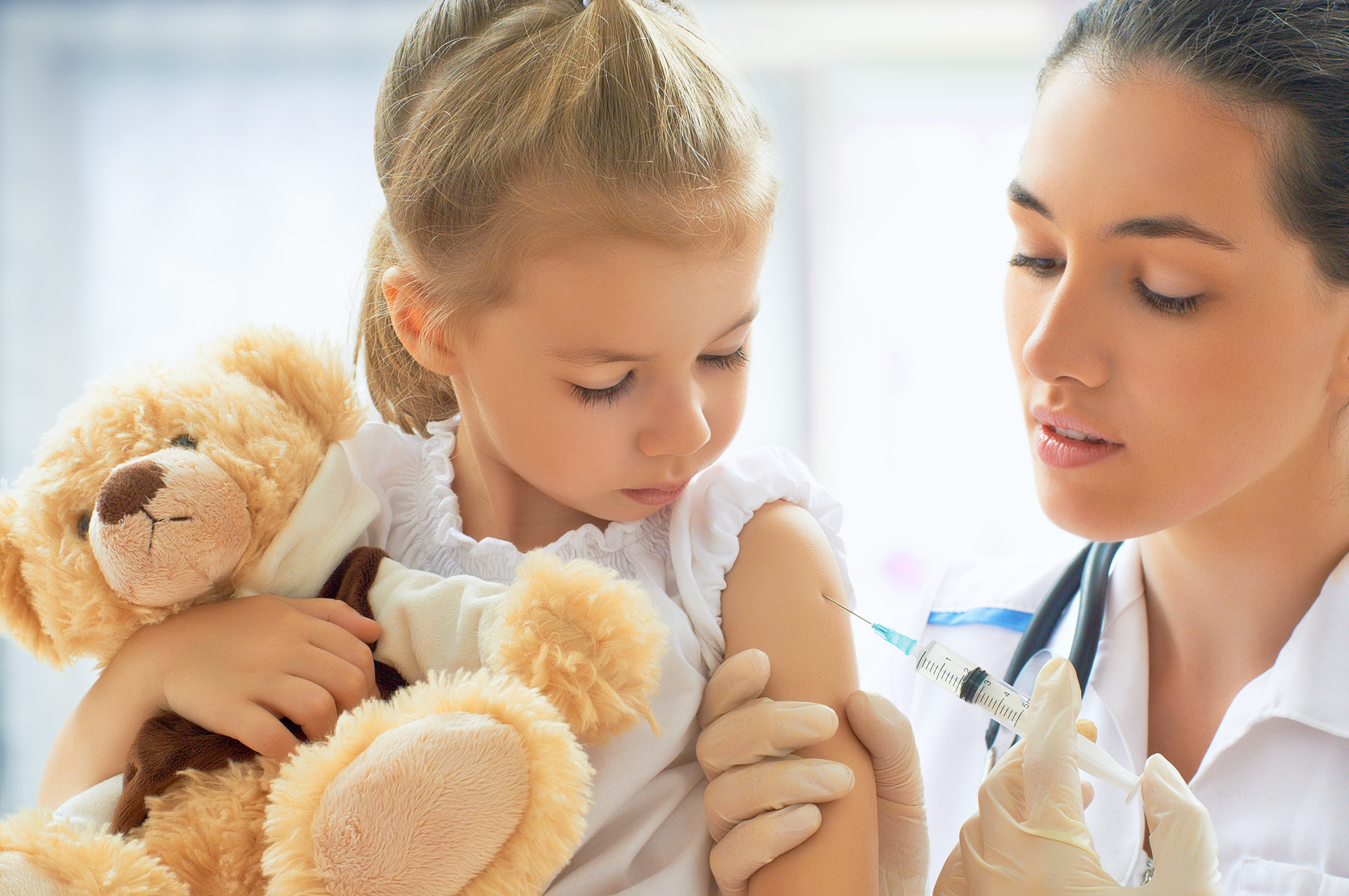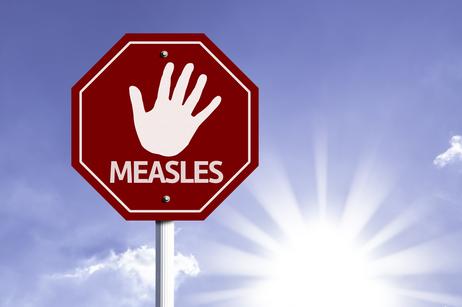Just three months after the first measles outbreak from Disneyland, researchers have confirmed that the low rates of vaccination are the culprit for measles spreading from California throughout the country, as just published in the JAMA Pediatric Journal.
"Disneyland is an international attraction and sometimes people are coming from places where measles vaccination rates are low or they don't get the recommended two doses, and that, combined with the fact that there are a lot of pockets of non-vaccination in California and people coming from all over the U.S. created the perfect storm for a big outbreak," lead author Maimuna Majumder of Boston Children's Hospital and the Massachusetts Institute of Technology told Reuters Health.
In late December 2014, the first signs that a measles outbreak was about to occur began to present themselves. People came into emergency rooms and doctor’s offices with high fevers, runny noses, coughing, and red, watery eyes. In addition to the ones originating in Disneyland, there were other unrelated outbreaks in Nevada, Illinois, and Washington. California has by far the most cases, numbering 142 in early March. Still, measles reports exist in 17 states and the District of Columbia, according to the Centers for Disease Control and Prevention.
This video explains how the measles vaccine works.
What makes this measles outbreak particularly disturbing – aside from the fact that the disease was declared eliminated in 2000 – is that it began at Disneyland, a place full of children who have since returned to school. The close proximity of people at the resort and in the classroom makes it somewhat of a surprise that more cases of the disease have not developed. However, the fact that the outbreak isn’t larger doesn’t put parents’ minds at ease.
School Districts Grapple With Required Vaccinations
In the face of an increasing public health crisis, K-12 school districts struggle to identify the best policy to protect their students from illness.
No federal law includes vaccinations as a requirement for enrollment in public school. However, according to the Centers for Disease Control and Prevention, all states have laws on the books that require vaccinations against some or all of the following diseases: measles, mumps, rubella, diphtheria, pertussis, tetanus, and polio.
A closer look at the CDC’s data shows that all states require at least one dose of the measles vaccine as a requirement for admittance into kindergarten. Many states now require two measles vaccinations. In either case, the dose or doses of the vaccine must be administered before the child’s fifth birthday.
However, several exceptions existto the vaccination requirement for enrollment in public schools.
- Medical Exemption - All 50 states and Washington, D.C. allow medical exemptions for vaccinations. Children with a medical contraindication to the vaccination, meaning it would be detrimental to their health, can be exempt from a certain required vaccine. A medical doctor must sign off on the waiver, although such a waiver is extremely difficult to get. Most of the reasons why a vaccination would be withheld have been resolved by medical research.
- Religious Exemption – All states other than West Virginia and Mississippi allow individuals to forego vaccinations if their sincerely held religious beliefs forbid it. Some state laws require an individual to be a member of an organized religion that forbids invasive procedures to be exempt. Others require the individual to present a signed affidavit from a spiritual advisor to receive a religious exemption. These requirements have been challenged in numerous state courts, with every ruling thus far finding such requirements to violate the First Amendment’s protection of religious freedom.
- Philosophical, Conscientious, or Personal Belief Exemption – Seventeen states allow for this third type of exemption based on one’s personal beliefs. Parents must give consent on behalf of their child not to be vaccinated unless that child is old enough to give his or her own consent, which usually occurs at age 12. Three states (Washington, Oregon, and California) require a medical doctor’s signature to get this exemption, but there is no such requirement in the remaining 14 states.
Because there are no blanket vaccination requirements and because there are varying exemptions available in every state, the reactions of school districts concerning the current measles outbreak have been all over the place. Some schools have taken no action, while others have removed scores of students and banned them from stepping foot on campus.
Public School Reaction
Many state laws forbid unvaccinated children from attending public school unless they have one of the abovementioned exemptions. But in light of the highly contagious nature of measles, some school districts are taking matters into their own hands.
In public schools across the nation, strong and swift action is being taken to ensure the safety of children in the wake of the spreading disease. Santa Fe Public Schools passed a resolution in February banning unvaccinated children from coming to school until proof of vaccinations can be provided.
In January, officials at Huntington Beach High School in suburban Los Angeles banned 24 unvaccinated students after they came into contact with an infected classmate. The two dozen students, who are now back in school, were banned from classes for nine days to ensure they didn’t contract and spread the disease.
At Palm Desert High School in Riverside County, California, 66 students were suspended for two weeks in January after coming into contact with an infected classmate on a school field trip. That student has since returned to school. The suspended students, none of whom had been fully immunized, were allowed to return early, provided they had proof of immunization or were cleared by the Riverside County Public Health Department.
Some parents have seen the actions of these school districts as necessary to protect the health of students and staff. Other parents view it as overstepping boundaries and infringing on their personal or religious rights.
To Vaccinate or Not Vaccinate

The current measles outbreak and the subsequent public school reactions to it have brought a sharp focus on declining vaccination rates in the United States. In New Jersey, religious vaccine exemptions havemore than quadrupled since 2007. More than 38,000 school-aged children in Texas received vaccination exemptions during the 2013-2014 school year, more than three times the number granted just six years ago.
Much of the blame for the current outbreak and the measles outbreak that occurred last year, in which 644 cases were reported in the United States, is placed on these rising vaccination exemption numbers. The 2014 measles outbreak, which involved more than three times the cases than any year since 2000, and the current outbreak may portend a future in which measles becomes a very serious public health issue once again.
The question of whether or not parents should vaccinate their children is a hot-button issue. Some parents, concerned about the safety and health of their children, maintain that vaccinations should be a requirement for admittance to school. Other parents, citing personal choice and religious freedom, support the notion that the government should not be able to dictate how parents raise their children or have input into their decision-making processes. Furthermore, opponents of vaccines maintain that they have dangerous side effects that can cause permanent damage and lead to any number of conditions in children, including autism.
How to Approach the Issue at Your Child’s School
If your child has been vaccinated, you can take solace in knowing that they will not contract measles should one of their classmates come to school as a carrier of the disease. By and large, most children are vaccinated, so the bulk of parents will fit into the category of being concerned about this emerging health issue but being protected from it at the same time.
If your child has not been immunized, there are barriers they will face, as evidenced by the reactions of school districts to the most recent measles outbreak. Your child may be sent home for a period to ensure he or she does not become ill. They may also face a ban from school until proof can be provided that immunizations have occurred.
If you’ve chosen not to vaccinate your child, discussing your child’s educational options with his or her school is a good first step. Schools will provide guidance and assistance so your child does not fall behind in school should they be sent home out of concern for their health. Maintaining open lines of communication is highly important for both sides as well.
Finding a balance between our individual rights as citizens and the need for public health and safety is critical yet extraordinarily difficult to do. Although the number of vaccination exemptions has risen dramatically in the last few years, as once-cured diseases continue to come back with a vengeance, we may see the passage of mandatory vaccination laws for public school children sooner rather than later.
Questions? Contact us on Facebook. @publicschoolreview











